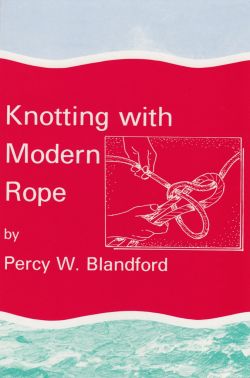
Knotting with Modern Rope
- Price:
- £12.95
Item attributes
- ISBN:
- 978-0-85174-630-2
- Published date:
- First published 1995
Item details
In recent years man-made materials have taken over almost completely from the natural fibres which have been used to make rope and all sizes of cordage for thousands of years.
Although synthetic rope has many advantages, its smoothness and method of construction makes the surface more slippery, so some traditional knots may slip and be unreliable and even dangerous.
This book addresses the practical problems of knotting synthetic ropes and cordage safely and securely. It describes the best knots for particular applications and not with accumulating a variety of knots for their own sake.
The author draws on his own experience and that of others, such as yachtsmen and climbers, who must make knots they can trust.
The book includes some well-established knots that are still suitable unchanged, together with alterations of others to make them secure and a few newly-developed knots especially suitable for synthetic cordage.
The book depends almost equally on descriptions and drawings, giving uses and methods of forming knots, with the body of the book divided into chapters:
- About modern ropes, strength, sizes, tools, terms.
- Joining knots, for all sizes from rope down to thread.
- Loops, with variations on traditional knots and some special forms.
- Attaching knots for joining to poles, rings, stones, with several special-application knots.
- Binding knots for closing bags, tying parcels and pulling things together.
- Quick-release knots that hold until a part is pulled.
- Adjustable knots that allow setting and control as well as gaining advantage when tightening or pulling.
- Some knots that can be tied when the ends of the rope are unavailable.
- Knots to form stoppers at the end of a rope.
- Some basic decorative knotting, for which synthetic materials are far better than traditional cords.
The book is completed with a comprehensive glossary and an index.

